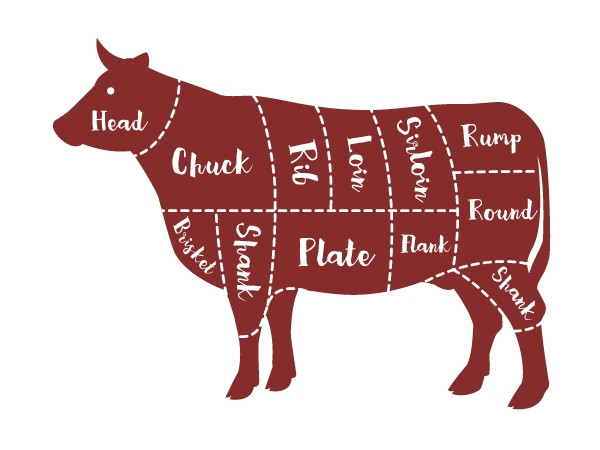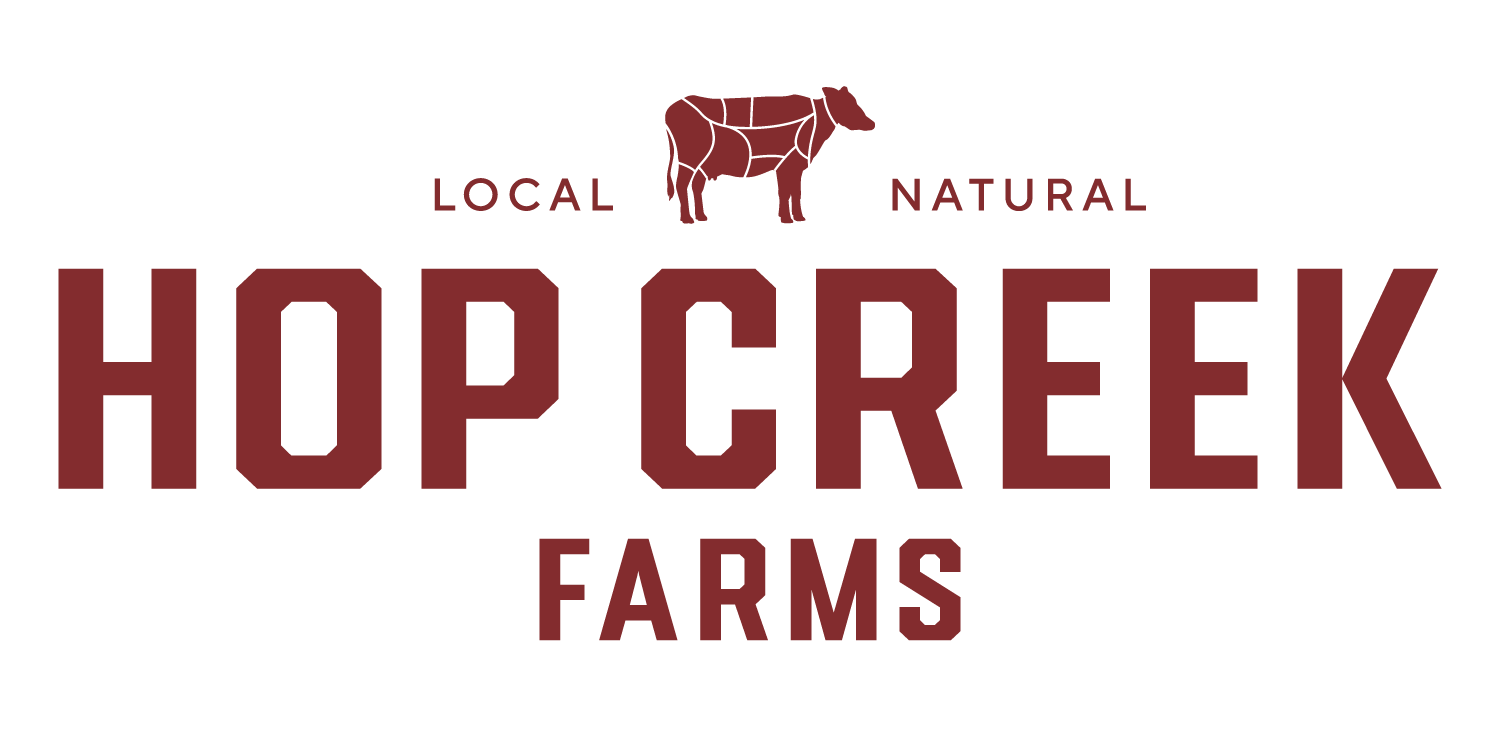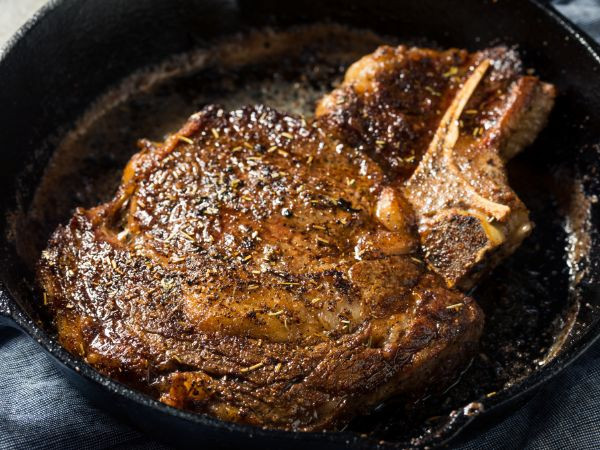Understanding Beef Cuts and How to Cook Them
posted on
March 31, 2023
Ask someone how they like their steak, and a meat lover may give you a passionate response. Some will insist that it be well-done, while others ask only that it “be shown to the fire.” There are many different cuts of beef, however, and to get the best out of them, you’ll need to cook them properly. So whether you are a master of the grill, or a fan of the slow cooker, this is your guide to understanding beef cuts and how to cook them.
Types of Beef

Many people who eat beef are familiar with sirloin, brisket, ribs, and perhaps a few others, but not only are there several types, some will taste best when slow-cooked for several hours, while others are great on the grill. Here are some of the most used types of beef along with the best means of cooking them:
Chuck
The chuck is the largest primal cut, located near the shoulder and neck area of the cow. It may also be referred to as the seven-bone steak. This area offers some of the less expensive cuts of beef such as the chuck roast and flat iron steak. If sold whole, it is known as the square cut chuck.
This cut is very flavourful and is a great choice for braised dishes, including beef stew and pot roast. This cut of meat should be cooked slowly over a lengthy period to make it tender, which means it is a top choice for slow cooker recipes. It is also suitable for quicker cooking methods when marinated. (Shop: Beef Chuck Steak, Beef Chuck Roast)
Shank
The shank comes from the leg of the cow and while it may not have quite the same degree of popularity as some other cuts, it is still an excellent choice for the right recipes, especially since it tends to be a more affordable cut of beef.
The shank is not a very fatty area and may be used in very low-fat ratios of ground beef or may be cross-cut into bone-in slices that are popular is osso buco and similar dishes. Being so lean, it also makes good low-fat ground beef. It is best suited for slow cooking in liquid. It is especially good for soups and stews, dishes like beef bourguignon, and for making beef stock.
Brisket
The brisket comes from the breast or lower portion of the cow. The muscles of the brisket area support the cow’s body weight. Accordingly, it is tough, fatty, and full of connective tissue. To become tender, the brisket requires slow cooking. Brisket may be sold whole or divided into two main cuts known as the brisket flat and the brisket point cut.
Most of the brisket is made up of the brisket flat, which resembles a flank steak It has some fat, but is mostly meat with connective tissue. The smaller outside muscle makes up the brisket point, which is a thicker cut with dense meat and considerably more fat. When sold whole, the brisket includes both parts and the layer of fat that separates them.
Brisket is a beloved favourite for barbecues, is braised for Passover, and is the source of smoked meat at your local deli. It is best cooked smoked or braised.
Rib
The rib includes some of the best cuts from the cow, valued for being flavourful, tender, and juicy with excellent marbling. Cows have 13 ribs, starting in the chuck section, but the rib primal refers to ribs 6 through 12. This area is less hard-working than the chuck and provides desirable but expensive short ribs. This area is also the source of back short ribs, ribeye steak, ribeye roast, and prime rib roast.
Rib cuts are another favourite of barbecue afficionados. These cuts are best when cooked over dry heat for a prolonged period, giving fall-off-the-bone results. (Shop: Beef Long Ribs, Beef Prime Rib Roast, Beef Rib Steak, Beef Short Ribs)
Plate
The plate, or short plate, is located on the cow’s front belly, below the rib primal. It can be separated from the rib primal at several different points according to the preference of the butcher. This area contains cuts like the short ribs, hangar steak, and skirt steak. Tough and fatty with a lot of cartilage, it is best when braised.
Flank
Located under the loin, the flank is a long, flat cut from the cow’s abdominal muscles which can be very flavourful when cooked properly. It is good for marinades due to its texture. Flanks are best cooked using methods such as braising, grilling, roasting, and sautéing.
As a very lean type of beef, the flank should not be overcooked, or sliced too thick. It should be cooked to no more than medium and sliced against the grain.
Loin
The loin is cut from the back of the cow, typically from the hindquarters directly behind the ribs, though the loin primal starts with the 13th and final rib. The loin offers some of the most tender cuts and can be cut into T-bone steaks, Porterhouse steaks, and filet mignon. It also contains the KC strip, tenderloin roast, and shell steak.
Loin cuts are best suited to cooking over dry heat, as on a grill. (Shop: Beef T-bone steaks, Tenderloin Steaks)
Sirloin
Also cut from the back of the cow, the sirloin is just past the loin. Although not as tender as the loin, it is a popular cut. The sirloin, as the name suggests, is used for sirloin steaks and filet of sirloin, as well as ball tip roast.
Sirloin is best when grilled, though it may also be sautéed, broiled, or pan-fried. (Shop: Beef Sirloin Tip Steak, Beef Sirloin Tip Roast, Beef Sirloin Roast)
The Round
Also known as the rump, this is the backend of the cow. Lean and inexpensive with little fat, the rump is the source of large roasts and provides some of the best value when preparing large family meals. (Shop: Beef Top Round Roast, Beef Bottom Round Roast)
Whether you’re looking for something to grill in the summer, or a slow-cooked roast to satisfy you in the colder months, you’ll find the right beef cuts at Hop Creek Farms. For more information about our sustainable, ethical meats, send us a message and we’ll be happy to get back to you.







